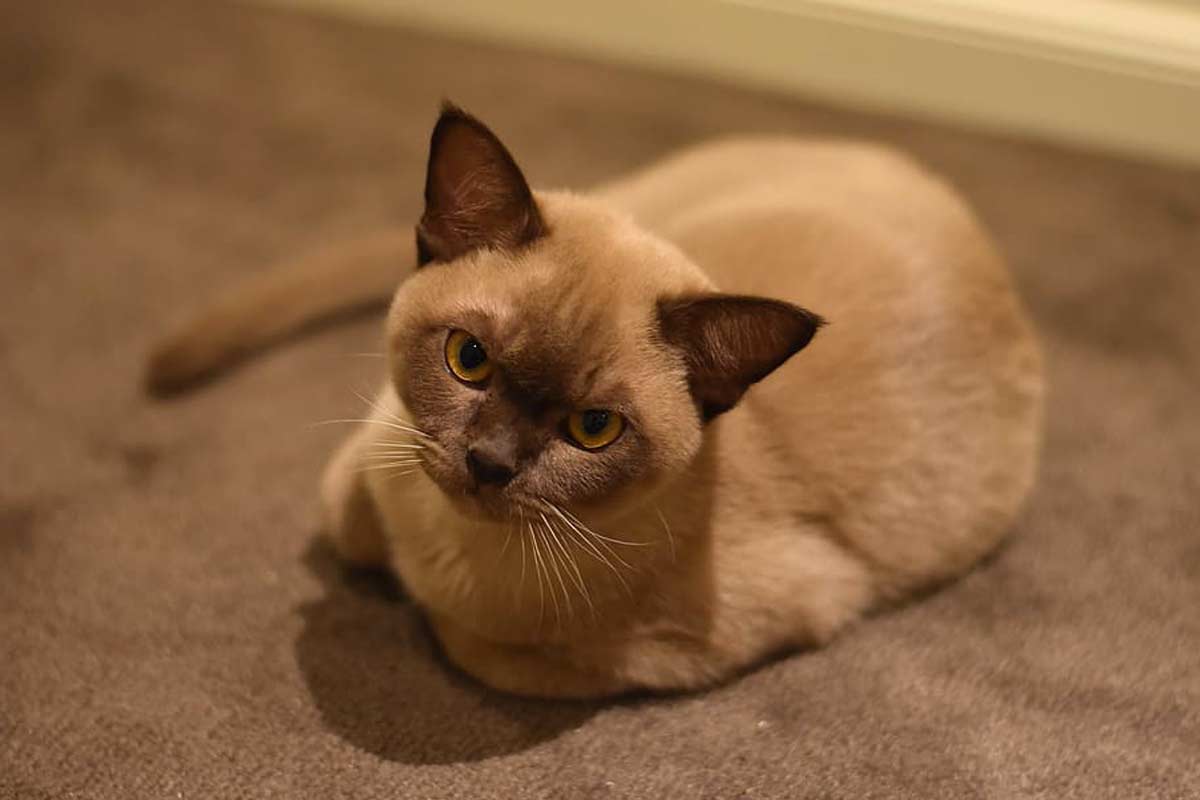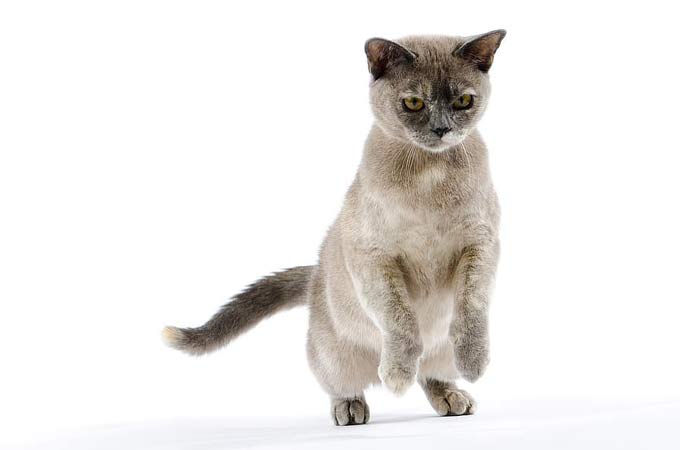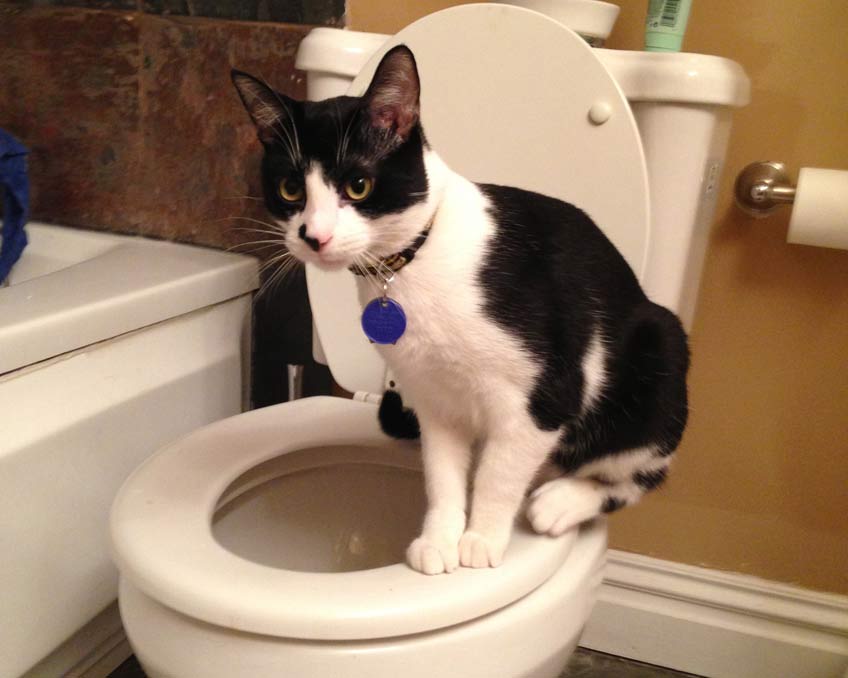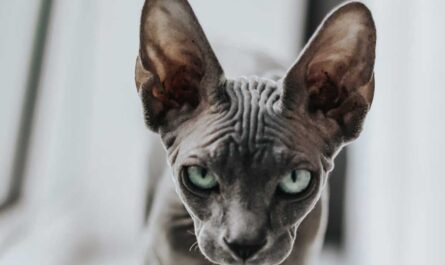Gaze into the mesmerizing, large golden eyes of a Burmese cat breed, and you’ll find more than just beauty – you’ll discover tales of ancient allure. These feline companions, with their silky, low-maintenance coats and robust physique, come in a delightful array of colors, from sable and champagne to platinum and blue. Their eyes, wide-set and ranging from yellow to amber, add to their undeniable charisma.
Weighing up to 5.5 kg, these enchanting creatures can defy age, often gracing households for more than 15 years.
A Glimpse into the Personality and Temperament of Burmese Cats
Burmese cats, descendants of Siamese ancestors, combine intelligence and sociability in a way that sets them apart. While they’re less talkative than Siamese cats, they more than compensate with their playful nature and affectionate disposition. These feline companions yearn to be an integral part of their human families, displaying a level of involvement that’s akin to our loyal canine friends.
A Dance of Playfulness and Devotion
One of the most endearing traits of the Burmese cat is their unwavering playfulness. Whether they’re in their youthful prime at 1 or have reached the venerable age of 16, their animated antics demand attention and ensure their presence is always acknowledged.
However, solitude doesn’t sit well with these affectionate creatures. Unless they have another pet to keep them company, Burmese cats may find extended periods alone disheartening. Fortunately, they easily bond with children and other pets, making them ideal companions for the whole family.
- Cat Health Supplies on Amazon
- Cat Food Supplies on Amazon
- Cat Scratching Posts for Indoor Cats
- Cat Water Fountain on Amazon
- Cat Carrier on Amazon
- Cat Automatic Feeders on Amazon
- Cat Guide Book on Amazon
Tracing the Origins of the Burmese Cat
The history of the Burmese cat is as enigmatic as the breed itself. Though originating in Burma, now Myanmar, their precise origins remain shrouded in mystery. References to copper-colored Burmese-like cats date back to the ancient Thai Cat Book, written between 1350 and 1767.
Legend weaves a fascinating tapestry of Burmese cat lineage, tracing its origins to the revered feline inhabitants of Burmese monasteries. For over five centuries, these majestic cats were hailed as divine entities, enshrined in poetry books from the Ayutthaya period, spanning from 1350 to 1750. They found a special place in the hearts of the people of Burma, now Myanmar, where they were believed to usher in prosperity and good fortune.
The timeline catapults us to 1930 when Dr. Joseph C. Thompson, a retired naval officer and psychiatrist from San Francisco, California, introduced Wong Mau, a brown female Burmese cat. Initially misconceived as a dark Siamese variant by many breeders, Dr. Thompson held steadfast in his belief to the contrary. Through extensive breeding experiments, fortified by the expertise of geneticists and biologists, as well as the invaluable contributions of Billie Gerst of Gerstdale cats and Mrs. Virginia Cobb of the renowned Newton Siamese lineage, Dr. Thompson’s theory was validated.
However, a formidable challenge emerged—there were no male Burmese cats in the USA. Undeterred, Dr. Thompson orchestrated a momentous union between Wong Mau and Tai Mau, a sealpoint Siamese hailing from Thailand. The result was a litter that encompassed seal point Siamese and brown kittens bearing an uncanny resemblance to Wong Mau. A subsequent breeding between Wong Mau and her son, Yen Yen Mau, birthed a notably darker-coated feline, christened the “Burmese.”
Here, a prevailing source of confusion emerges—the presence of another breed known as the Birman (or Sacred Birman). This confusion often arises due to Google Translator’s erroneous translation of “Burma” as “Birma” in multiple languages.
- Buy Cat Accessories on Amazon
- The Complete Guide to Adopting a Cat: Preparing for, Selecting, Raising, Training, and Loving Your New Adopted Cat or Kitten
- Amazon Best Sellers: Best Cat Training
- Amazon Best Sellers: Best Pet Cats
- Amazon Best Sellers: Best Cat Care
- Amazon Best Sellers: Best Cat Care & Health
- Amazon Best Sellers: Best Cat Breeds
In 1948, the Burmese cat embarked on its journey to the UK, heralding a new chapter in its history. By 1955, a pivotal moment arrived with the birth of “Blue Surprise,” a unique silver-gray kitten. This marked a turning point as it was revealed that the brown Burmese was genetically akin to the Siamese seal point, while the blue mirrored the Siamese blue point. The transformation was underway. The USA witnessed the emergence of lighter brown Burmese variants, labeled as Chocolate or Champagne, followed by a delicate blue iteration christened Lilac or Platinum.
Between 1965 and 1975, British breeders ventured into the introduction of the red color gene. This was achieved through crossbreeding with domestic red tabbies and red Siamese cats. The result was the birth of red, cream, and tortoiseshell Burmese cats.
Europe opened its doors to the Burmese in the late 1950s, primarily gaining a foothold in Scandinavia. The breed’s popularity surged during the 1960s and 1970s with multiple imports. By the 1960s, countries such as Germany, Holland, and France were already acquainted with the Burmese, while the 1970s ushered in an array of new colors from the UK.
Australia and New Zealand welcomed their first Burmese cats in 1957. Due to stringent animal import regulations and rigorous quarantine measures, these regions saw the Burmese breed evolving in isolation for a significant duration. Eventually, this isolation led to the bifurcation of Burmese cats into two distinct breeds: the European and American Burmese cats, each tracing its unique lineage.
The journey of the Burmese cat, woven with threads of heritage, genetics, and human dedication, continues to captivate the hearts of feline enthusiasts worldwide, bridging continents and cultures with its timeless allure.
The modern Burmese cat, as we know it today, owes its existence to Dr. Joseph Thompson, who, in 1939, imported a small brown female cat named Wong Mau to San Francisco. Wong Mau was then bred with a Seal Point Siamese, laying the foundation for the contemporary Burmese breed.
This breed was initially developed in Britain during the late 19th century but later faced a decline before experiencing a revival in the 1950s.
Characteristics of Burmese Cats: Unveiling Their Enigmatic Personalities
When it comes to Burmese cats, it’s important to recognize that their temperament, though influenced by gender to some extent, primarily hinges on individuality. These enchanting felines possess distinct personalities that go beyond broad gender-specific traits. However, what remains constant is their profound love and unwavering curiosity, characteristics that define the essence of Burmese cats.
Social Butterflies with Subtle Preferences
Burmese cats are inherently social creatures, easily forming connections not only with their fellow Burmese but also with dogs and various cat breeds. Yet, within the tapestry of their sociability, a subtle inclination towards their own kind often emerges. It’s as if they possess an innate recognition of their brethren, irrespective of color variations.
A Symphony of Melodic Communication
In the realm of feline vocalization, Burmese cats diverge from their Siamese and Oriental cousins, who are celebrated for their vocal prowess. While Burmese cats do communicate through gentle vocalizations, they do so sparingly and with purpose. Their sweet-toned expressions serve as a means to ensure your undivided attention without overwhelming your senses.
- Cat Products for Indoor Cats
- Cat Toys for Indoor Cats Best Sellers
- Surprise Subscription Boxes for Cool Cat On Amazon
- Build Your Cat Box. 1 Box Every 3 Months
- Litter Boxes for Your Lovely Kitten On Amazon
- Toilet Training Kit for Your Cute Cat On Amazon
Burmese Cats: The Epitome of Loyalty
The tales of a Burmese cat’s unwavering attachment are the stuff of legend among their owners. If ever loyalty could be personified in a feline form, it would undoubtedly manifest as a Burmese. Their perpetual yearning for companionship leads them to seek the coziest spot on your lap or the snug corner of your bed. Furthermore, their exceptional compatibility with children solidifies their status as beloved family pets.
Natural Entertainers
With a Burmese cat in your midst, mundane moments become a rarity. They often take it upon themselves to infuse a sense of playfulness into your life, whether through their whimsical antics or their unique interactions with toys. Even when you’re not in the mood to partake in their playful endeavors, they’ll contentedly perform as solo entertainers, ensuring you remain amused from a distance.
Tenacious Thinkers
The inherent intelligence of the Burmese breed often manifests in their tenacious pursuits. When they set their sights on a goal, you can expect resolute and persistent efforts. Their infrequent vocalizations usually convey strong opinions or express their needs, serving as an avenue for their determined thought processes.
Guardians of the Indoor Realm
Burmese cats, deeply reliant on the safety and care provided by their human families, find themselves ill-equipped for the challenges of the great outdoors. The world beyond the secure confines of home presents a myriad of risks that they may not be equipped to handle. Consequently, they thrive best in indoor environments, where their security and well-being are assured.
Navigating Burmese Health: Common Diseases and Conditions
Understanding the potential health concerns of Burmese cats is essential for responsible pet ownership. Some common conditions include:
- Lipemia of the Aqueous Tumor: This condition may manifest as a milky appearance in a kitten’s eyes, which often resolves naturally.
- Corneal Dermoid: Skin or hair growth over the cornea can be corrected through surgery.
- Orofacial Pain Syndrome: Stress-related facial pain may lead to excessive licking, chewing, or pawing at the mouth. Medication and protective collars can offer relief.
- Congenital Peripheral Vestibular Disease: This condition in kittens may result in poor balance, head tilting, rapid eye movement, lack of coordination, and even deafness.
- Burmese Head Defect: A craniofacial deformity affecting skull formation, severely impacting a cat’s quality of life. Responsible breeding is crucial to avoid this condition.
- Hypokalaemic Polymyopathy: Muscle weakness due to low potassium levels in the blood can cause stiffness, reluctance to walk, and tremors. It’s treatable with potassium supplements.
- Flat-Chested Kitten Syndrome: A deformity that can hinder chest and ribcage development in kittens, often with no lasting effects in survivors.
- Other Issues: Burmese cats may also be susceptible to kinked tails, elbow osteoarthritis, endocardial fibroelastosis (a heart condition), dilated cardiomyopathy (enlarged heart), and diabetes.
Remember that not all of these conditions are covered by pet insurance, so it’s essential to consult with your veterinarian about proper care and preventive measures.

A Complete Guide to Caring for Your Beloved Burmese Cat
When it comes to your cherished Burmese cat, providing them with the best care possible is an endeavor that pays rich dividends in their vibrant and healthy life. Equipped with a little guidance, you can effortlessly meet their needs, understand their dietary requirements, and tend to their grooming and health essentials, thereby enhancing the quality of their existence.
Affectionate Bonds: More Than Emotions Alone
For Burmese cats, love and care are not mere sentiments but vital elements that deeply influence their overall well-being and disposition. These exquisite felines have an insatiable thirst for affection from their human families. In fact, their emotional equilibrium is as significant as their physical health. Hence, ensuring that they are enveloped in a consistent cocoon of love is paramount.
- Cat Breed Book on Amazon
- Cat Behavior Book on Amazon
- Cat Training Book on Amazon
- Cat behavior Products on Amazon
- Cat Breed Test
- GPS cat, dog, and Pet trackers
- Cat leash and harness set
Effortless Simplicity: Minimalistic Care
Unlike some of their more high-maintenance feline counterparts, Burmese cats proudly wear the badge of low-maintenance pets. Their care requirements are refreshingly uncomplicated, making them an ideal choice even for first-time cat parents. By offering them a straightforward, well-balanced diet, maintaining their peak health, and adhering to their grooming regimen, you are essentially crafting an environment where they can flourish and feel completely at ease.
Diet and Nutrition: Nourishment for the Soul
Given the Burmese cat’s inherent vigor and vitality, a diet rich in high-quality protein is the cornerstone of their well-being. Devising a meticulously planned nutritional regimen is pivotal to cater to their intricate physiological needs and secure their optimal health. Regular consultations with a veterinarian are indispensable to ensure that the dietary choices align seamlessly with the ever-evolving requirements of your Burmese companion.
Health: Paving the Path to Longevity and Bliss
Although Burmese cats are bestowed with robust health, maintaining a balanced, preferably grain-free, diet remains a linchpin for their continued well-being. The proactive measures of regular veterinary check-ups, timely vaccinations, and an astute vigilance for any shifts in behavior are universal care standards essential for the welfare of cats across breeds.
Grooming: The Path to Sheer Radiance
Grooming stands as an integral facet in preserving the exuberance of your Burmese cat. Their short, velvety coat bestows a certain advantage upon owners, as it minimizes the complexities typically associated with grooming. However, this does not negate the necessity of consistent care. A gentle session with a rubber brush on a weekly basis will keep their coat luminous, averting the accumulation of dead hair and potential knotting.
European vs. American Burmese Cats
The tale of the Burmese cat is nothing short of enthralling, especially when you delve into its intriguing bifurcation into two distinct lineages: the European and American. These modern Burmese feline breeds took shape in the landscapes of the United States and Britain, ultimately culminating in their distinctive breed standards. However, it’s essential to acknowledge that not all feline authorities categorize them as separate entities, which adds an element of complexity to their tale.
- Buy Bird Accessories on Amazon
- Buy Cat Accessories on Amazon
- Buy Dog Accessories on Amazon
- Buy Fish Accessories on Amazon
- Buy Pet Accessories on Amazon
European Elegance: A Pinnacle of Poise
The European Burmese, an admired figure in regions like Europa, the UK, Australia, and New Zealand, exudes an air of sophistication. Its physique is an epitome of grace, boasting a lengthy body, svelte legs, and delicately shaped oval paws. The facial contours are distinctively wedge-shaped, crowned by an elongated, commanding muzzle and beguiling almond-shaped eyes. This majestic elegance extends to its tail, typically of medium length, and serves as the final brushstroke on this portrait of feline finesse.
American Allure: A Different Kind of Charisma
In the realm of the American Burmese, rooted firmly in the USA, a different charm unfolds. It bears a more robust and compact body, an embodiment of balance, with limbs harmoniously synchronized with its form. The facial lines take on a broader persona, accentuated by a succinct yet subtly flattened muzzle. But what truly sets it apart are the eyes—large, round, and expressive, a stark contrast to its British counterpart. However, both lineages share common ground in paw shapes and tail lengths, creating a harmonious fusion amidst their distinctions.
Size and Weight: The Surprising Heaviness of Elegance
When it comes to size, both the British and American Burmese cats comfortably nestle within the small to medium category. Their frames, though seemingly delicate, carry an unexpected weightiness, a trait that affectionately earned them the moniker “brick wrapped in silk.” Weighing in at around 4 to 6 kg, they defy expectations with their muscular presence.
Coat and Color Palette: A Symphony of Silky Hues
Their coats, consistently short and silkily textured, cast a radiant sheen. Historically, the Burmese ensemble was dressed in a rich dark brown hue, known variably as sable in the USA, brown in the UK and Australia, and seal in New Zealand. However, modern breeding endeavors have painted a diverse color canvas.
For the American variant, the breed standard welcomes four color variations: sable (akin to brown), blue, champagne (reminiscent of chocolate), and platinum (evoking the delicate shade of lilac).
Conversely, the European counterpart boasts an expansive color palette: brown (akin to seal), blue, chocolate, lilac, red, cream, seal tortie, blue tortie, chocolate tortie, and lilac tortie.
Eyes that Speak: Windows to the Soul
The American Burmese enchants with its expansive, slightly surprised-looking eyes, radiating a captivating roundness, distinctively set apart. In contrast, the European version, while also endowed with large eyes set wide apart, embraces a top eye line that exhibits a straight, gently sloping descent toward the nose. This oriental charm, coupled with a rounded bottom eye line, imparts an exotic allure.
Navigating Cat Associations: A Complex Classification
In the realm of cat associations, a complex landscape unravels. American entities such as CFA and TICA, alongside Europe’s WCF, draw a clear line in classifying the Burmese cat as two distinct breeds: the American and European Burmese, each adhering to its unique breed standard. However, Europe’s esteemed FIFe takes a different stance, recognizing only the European Burmese as the embodiment of this breed.
Curious Tidbits About Burmese Cats
The Thai name for the Burmese Cat translates to “beautiful, fortunate, and of splendid appearance.” Burmese cats are sometimes likened to a “brick wrapped in silk” due to their sturdy yet delicate physical form.
Interestingly, male and female Burmese cats can exhibit distinct personality traits. Females are often characterized as curious, active, and emotional, while males tend to be more relaxed and laid-back.
Conclusion: Cultivating a Lifetime of Happiness
It is imperative to acknowledge that while Burmese cats possess an inherently easy-going disposition, their thriving is intrinsically tied to your unwavering dedication and affection. By seamlessly incorporating these care guidelines, you are embarking on a journey that ensures your furry companion enjoys a life marked by health and happiness, creating cherished memories to treasure for years to come.
The Burmese cat is a captivating blend of elegance and charm, with an unwavering affection for its human companions. Their unique combination of beauty and playfulness makes them an ideal choice for families seeking an affectionate feline friend.
More Interesting Articles
- 23 Essential Health and Care Tips for New Cat Owners
- 14 Tips How To Introduce & Habituate a Kitten to a Cat
- 15 Top Reasons to Adopt an Older Cat Is a Good Option
- Should I Get A Cat or a Kitten? 15 Tips to Take Decision
- 19 Ways Cats Show Their Love & Affection to You
- How to Bathe Your Cat: With or Without Water, Not Do-Do
- Reasons Why Does My Cat Poop on My Bed? 16 Solutions
- Why is My Cat Pooping Outside the Litter Box: 12 Reasons
- 14 Cat or Kitten Behavior: How to Understand & Handle
- 8 Reasons to Decide Which is Better for You: Cats or Dogs?
- 34 Interesting Facts People Love to Learn about A Cat
- How to Get My Cat to Successfully Use the Litter Box
- A Complete Guide: How to Find the Perfect Cat for You
- How to Cut, Clip, or Trim Cat Nails: A Beginner’s Guide
- 30 Tips to Find the Best Way to Raise A Kitten Smoothly
- Egyptian Mau Cat Breed Profile, Care, Description, Behavior
- 10 Best Food for Older Cats with Sensitive Stomachs
- 10 Best Litter Boxes for Cats That Pees Over the Side
- 5 Best Cat Food Items for Sensitive Stomach Vomiting
- Best 5 Cat Food For Sensitive Stomach and Urinary Health



